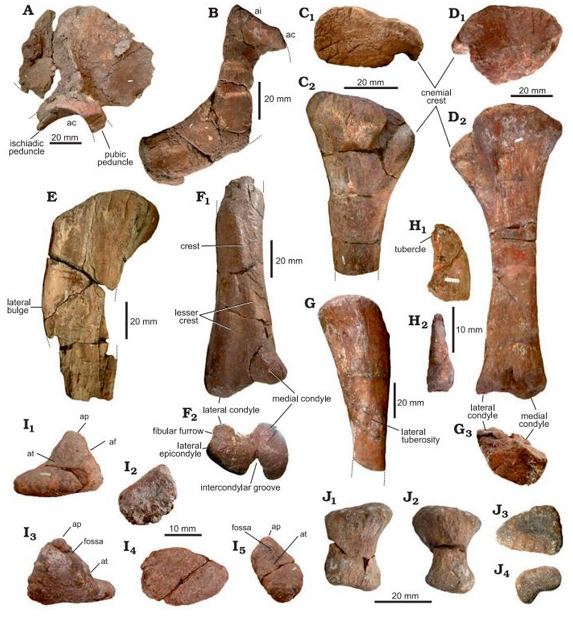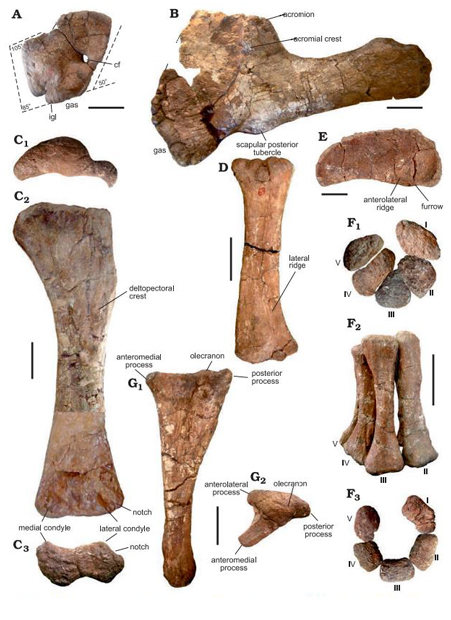New Giant Titanosaur from Argentina Described
A new species of giant titanosaur has been scientifically described. The dinosaur, known from fossils from Neuquén Province, (Argentina) has been named Bustingorrytitan shiva. This dinosaur may have weighed more than sixty-seven tonnes! Although the body mass estimates are prone to error, it is likely that this huge herbivore weighed at least fifty tonnes.
The fossil material was collected from the base of the Huincul Formation and consists of a relatively complete skeleton and the partial remains of three others. The strata have been dated to the upper Cenomanian (95 mya). The fossils were collected from the surroundings of Villa El Chocón. The genus name was erected to honour Manuel Bustingorry, who permitted the excavation work to take place.
The species name is from the Hindu deity Shiva, which transformed the universe. This alludes to the extensive faunal turnover that occurred in the Cretaceous towards the Cenomanian/Turonian boundary.

Calculating the Weight of a Giant Titanosaur
Both cranial and postcranial material was recovered. The fossil material includes right and left humeri and fragmentary thigh bones (femora). From these bones (humerus and the femur) the minimum circumference of these limb bones can be established. A formula (Campione and Evans, 2012) can then be applied to estimate the body mass of the animal. These calculations suggest that B. shiva was heavier than Dreadnoughtus schrani and perhaps comparable to the original body weight calculated for Patagotitan mayorum.

Intriguingly, the holotype material from which some of the limb bone measurements originate, suggests that the holotype specimen was not fully grown when it died. Bustingorrytitan shiva, may have been much larger.
The scientific paper: “A new gigantic titanosaurian sauropod from the early Late Cretaceous of Patagonia (Neuquén Province, Argentina)” by María Edith Simón and Leonardo Salgado published in Acta Palaeontologica Polonica.

